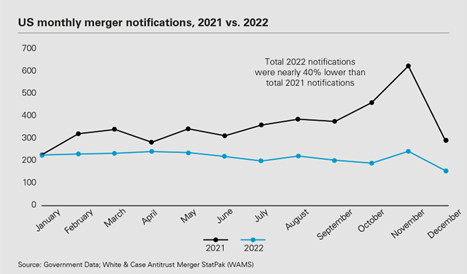The Assignment Model in EU Competition Law and Why Roundwood is (partly) on the wrong track
The term “Assignment Model”, is a mechanism for bundling damages claims. It is not a legal instrument, but it is possible in some Member States such as Germany as a workaround. The Landgericht Dortmund decided to refer the Roundwood Case
to the ECJ in order to get a preliminary ruling on EU law’s stance regarding the Assignment Model within the area of competition. So far, Advocate General Maciej Szpunar delivered his Opinion
hints in this direction. Moreover, although the Damages Directive
The Assignment Model
First, some information about the Assignment Model which is not always about collectivisation, but which exists in two major versions:
Some legal service providers focus on claims depicting clear criteria that can easily be captured in a database (such as the cancellation or delay of flights regarding the Air Passengers Rights Regulation
- ) and offer an
- ).[2015]
fiduciary basis. The legal entity will (jointly) enforce the claims thus serving as an enforcement vehicle.The Assignment Model is
based on a contingency fee in combination with an exemption from costs. External litigation funding can be used to finance the case. The Assignment Model is risk-free for the claimant in terms of extra costs. However, the injured party will never receive all the damages incurred but just a percentage. Practical need for collective law enforcement?
The existence of the Assignment Model seems to confirm that – besides (insufficient) statuary instruments – there is practical need for collective private law enforcement.
But Why?
There is a variety of reasons why a party injured might not sue. Collective private law enforcement may be able to help. The first reason which comes to mind is the burden of proof: for a private individual without any investigative powers (such as the competition authorities have), it will be quite hard to prove an infringement.Another reason is
rational apathy
: If an infringement results in minor to moderate damages, the expected costs from the proceedings may be greater than the estimated benefits.And a third reason is the structural imbalance
between plaintiff and defendant typically resulting in mass proceedings: As the rational effort one should put into a legal dispute depends on how much is at stake, with many parties having suffered a loss from one major infringement, for the defendant, there is the risk of a precedent being set each time. The defendant is also at risk of setting a precedent for future lawsuits, as the rational effort to be put into a legal dispute depends on how much is at stake. For the plaintiff, however, it is only a matter of their damages and therefore, in the case of several injured parties, a smaller amount than for defendant. For the plaintiff, on the other hand, it is only a matter of their damages and thus, in the case of several injured parties, necessarily a smaller amount than for the defendant.Collectivisation does not result in investigative powers and therefore will not help with the burden of proof as such. If the burden of proof is not to prove internal events within an enterprise, but rather the costs of e.g. These costs can be split between external economic experts. When combining several claims, average costs per claim typically fall, and the rational apathy threshold will also drop. Moreover, there is an incentive to invest more for the plaintiffs if they sue as a collective thereby evening out the structural imbalance.
Preclusion of the Assignment Model?
Although it helps in overcoming barriers, EU law might still preclude the Assignment Model. The Representative Actions Directive
is not applicable to competition law. However, the discussion that took place during its emergence shows that some of its provisions relate to fundamental principles of EU Law and are therefore relevant to the Assignment Model:
The associated debate and Recital 10(2) RAD demonstrate a
- which is an important aspect to the Assignment Model:The accompanying Debate and Recital 10(2) RAD reveal The accompanying discussion and Recital 10(2) RAD show a general reluctance regarding third-party funding
- Directive only requires that conflicts of interests be avoided. EU law cannot exclude the Assignment Model because it is used, since even the RAD does include third-party funding. During the legislative process, there was a huge focus on entities that were allowed to file for mass proceedings (see e.g. 20). This resulted in the article 3 RAD only allowing entities with a
M.I.C.M., the ECJ had to consider a different version of Assignment Model regarding intellectual property law and the interpretation of the Enforcement Directive [2021]
The principle of full effectiveness?
With M.I.C.M. In its leading decision on private law enforcement, Courage
, the ECJ elaborates: In its leading decision on private law enforcement, Courage [2002]
“The full effectiveness of [Article 101 TFEU] and, in particular, the practical effect of the prohibition laid down in [Article 101(1) TFEU] would be put at risk if it were not open to any individual to claim damages for loss caused to him by a contract or by conduct liable to restrict or distort competition.”
Though EU law (at that time) did not explicitly ask Member States to introduce damage claims, the principle of full effectiveness still required Member States to do so. Regarding their design, the judgment continues:
“However, in the absence of Community rules governing the matter, it is for the domestic legal system of each Member State (…) to lay down the detailed procedural rules […], provided that such rules are not less favourable than those governing similar domestic actions (principle of equivalence) and that they do not render practically impossible or excessively difficult the exercise of rights conferred by [Union] law (principle of effectiveness) […]. “
Therefore, Member States could (in general) install the required damage claims in such a way that it suited their legal system but had to consider both the principle of equivalence and the principle of effectiveness.
Important side note: From my point of view, the principle of effectiveness and the principle of full effectiveness are – though they share a similar name – not the same. The principle of full efficacy applies to the introduction of a new instrument. The principle of effectiveness is concerned with its design. This dichotomy was already pointed out by the Advocates General Kokott Wahl and Szpunar. However, they did not use the former term but simply described the phenomenon. para. 85 et seqq. of the Opinion
What is to conclude with regard to collectivisation mechanisms? The controversy surrounding the Assignment Model does not concern the transferability of a right in general but rather the validity of a fiduciary assignment during court proceedings. To me, these are simply modalities. In His Opinion
The principle of effectiveness?
This leads to the principle of effectiveness. This leads to the
principle of effectiveness
Nonetheless, because no real statutory collectivisation mechanism for businesses exists, in the eyes of the Landgericht Dortmund
(para. 68 et seqq. ), the principle of effectiveness is indeed infringed.
can effectively exercise
the right to claim full compensation” and thereafter allege that a legal system which dutifully implemented that Directive makes the very same claims practically impossible or at least excessively difficult.
Lastly, to my mind, it is not even necessary to recur to the principle of effectiveness. At least with regard to Germany, there is a more compelling reason: the principle of equivalence.
The principle of equivalence?The
principle of equivalence
In comparison, several lower courts have dismissed the Assignment Model under competition law. As a rationale, you will find a common argument: Competition law is too complex and difficult (see Landgericht Dortmund para. 63). The German Legal Services Act confirms this. And in Financialright,
Therefore, from my point of view, it is actually the principle of equivalence which is of paramount significance to Roundwood demanding for an extension of the Assignment Model to EU competition law. The case is wrong because it only focuses on effectiveness.





